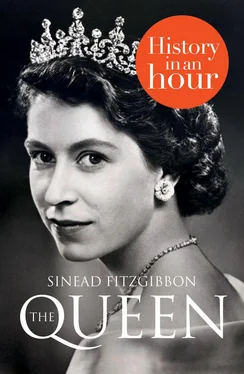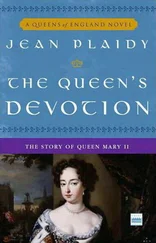As far as George V was concerned, it was mission accomplished.
The Birth of a Princess
After their high-profile nuptials, Bertie and Elizabeth would undoubtedly have preferred a peaceful start to their married life. But their royal status meant that, during the first few years at least, they were kept busy with a number of official visits abroad, no doubt calculated to capitalize on their popularity.
Then, after two years spent devoting themselves to their royal duties, the Duchess of York was delighted to discover, in the summer of 1925, that she was pregnant with the couple’s first child. Although the pregnancy was relatively uneventful, the birth proved to be difficult. Complications arose during the labour, which had begun a few days prematurely. To the relief of all concerned, the Duchess was finally delivered of a healthy daughter at 2.40 a.m. on 21 April 1926, at the couple’s home at 17 Bruton Street, Mayfair. The newspapers of the time stated, somewhat mysteriously, that the Duchess was obliged to undergo ‘a certain line of treatment’, thought to be a euphemism for the procedure now known as a Caesarian section.
When news of the safe arrival of their first granddaughter reached Buckingham Palace by telegram a little while later, King George V and his wife, Queen Mary, were overjoyed. They visited the newest addition to their family the following day, and the Queen wrote in her diary: ‘Such a relief and joy. Saw the baby who was a little darling with a lovely complexion and pretty fair hair.’ The child’s christening took place the following month, on 29 May, at Buckingham Palace, using water from the River Jordan. As is royal custom, the young Princess was given names from previous generations of her illustrious family – she was christened Elizabeth Alexandra Mary after her mother, great-grandmother and grandmother respectively.
The ceremony was a grand occasion, and despite having died twenty-five years previously, Queen Victoria’s imposing shadow loomed large over the event. The gold baptismal font, which had been used to christen of all Victoria’s children, was conveyed from Windsor Castle for the occasion, while the child’s christening gown was another relic from a bygone era, having been originally used for Queen Victoria’s first daughter. Interestingly, for a woman who would soon learn never to show her feelings in public, Princess Elizabeth’s incessant wailing throughout the ceremony left her parents in no doubt that she was immensely unimpressed with the whole affair.
When the young Princess was just eight months old, her parents were obliged to leave her behind in England when they embarked on another tour, this time of Australia. The enforced six-month separation, however, proved to be more difficult for her mother than for the infant herself, with the Duchess recalling later that parting from her beloved daughter ‘quite broke me up’.
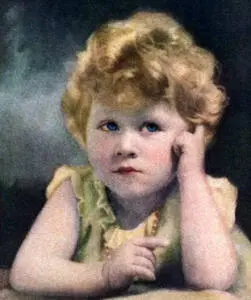
Portrait of Princess Elizabeth, aged three (1929)
In her parent’s absence, the responsibility for Princess Elizabeth’s care mainly fell to her nanny, Clara Knight, who had also looked after the Duchess as a child. Known as ‘Alah’ to her young charges, this indomitable, no-nonsense woman was to have a profound influence on the young Elizabeth, who would continue to remember her fondly long into adulthood. The little Princess, however, was not completely without familial influence during those formative months when her parents were away. In addition to frequent visits to her maternal grandparents, she was also taken to see King George and Queen Mary every afternoon. In fact, when the Duke and Duchess of York finally returned from their arduous trip in June 1927, they were delighted to discover that their fifteen-month-old daughter had become the darling of Buckingham Palace.
It was not just her grandparents who were charmed by the child – it seemed Elizabeth, or Lilibet as she would become known (a nickname which stemmed from her inability to pronounce her name correctly), charmed almost everyone who encountered her. Even the inscrutable Winston Churchill was not immune. After seeing the child at Balmoral in 1928, the then Chancellor of the Exchequer wrote to his wife: ‘[She] is quite a character. She had an air of authority and reflectiveness astonishing in an infant.’
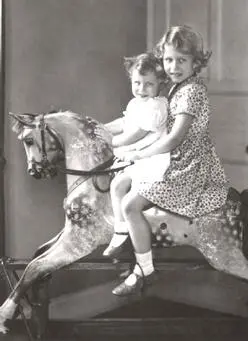
Princess Elizabeth and Princess Margaret Rose (1932)
But Lilibet did not remain the centre of attention for long. When, on 21 August 1930, her sister, Margaret Rose, was born, the new arrival wasted no time in making her presence felt. With the baby monopolizing all of Alah’s time, Lilibet’s care was delegated to a nursery assistant, Margaret McDonald, whom the Princess immediately nicknamed ‘Bobo’. And while she was to grow very fond of Bobo, the loss of her beloved Alah must have been very keenly felt by the four-year-old child. It soon became clear that Margaret Rose was very different in temperament to her older sibling. More headstrong and unruly, she was much naughtier than Lilibet, and was forever getting into scrapes, which would prompt the exasperated Alah to exclaim, ‘I really don’t know what we are going to do with Margaret!’ But no one could ever stay mad at her for long – she possessed an enviable ability to make people laugh, with the result that any naughtiness was soon forgotten.
However, despite the marked differences in their personalities, the sisters grew very close. Aside from the usual nursery arguments, during which Lilibet would often bitterly complain that ‘Margaret always wants what I want!’, the girls played well together. Indeed, it seems they had no choice but to get along – being educated at home by their governess Marion Crawford, or ‘Crawfie’, the princesses spent every day in each other’s company, with almost no outside influences to distract them.
Unfortunately, their peaceful existence did not last long. When Princess Elizabeth was just ten years old, her father’s older brother dropped a bombshell that would shatter the family’s idyll forever.
The Death of ‘Grandpa England’
The final weeks of 1935 had not been a happy period for the British Royal Family. From mid November, it had become obvious that George V’s health was in serious decline, to the extent that when the King’s physician released a notice to the Press on the evening of 20 January 1936, stating that ‘the King’s life is drawing peacefully to a close’, no one was much surprised. The doctor’s predictions proved to be correct. At 11.55 p.m. on the same evening, King George V, whom Princess Elizabeth had lovingly dubbed ‘Grandpa England’, breathed his last. He was succeeded by his eldest son, David, the erstwhile Prince of Wales, who chose to take the regnal name of King Edward VIII.
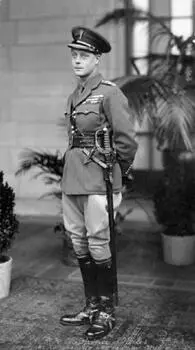
Prince of Wales, later Edward VIII (1919)
However, contrary to his doctor’s communiqué, George V’s passing was anything but peaceful. In his final years, the ailing King had been increasingly troubled by doubts regarding David’s suitability to take on the highest position in the land – and his misgivings were far from unfounded. As Prince of Wales, David had lived the life of a pleasure-seeking playboy prince. Weak-willed, petulant, yet endlessly charming, David was bored senseless by royal protocol and showed little interest in affairs of State, preferring instead to absorb himself in a number of adulterous liaisons with married women.
Читать дальше
